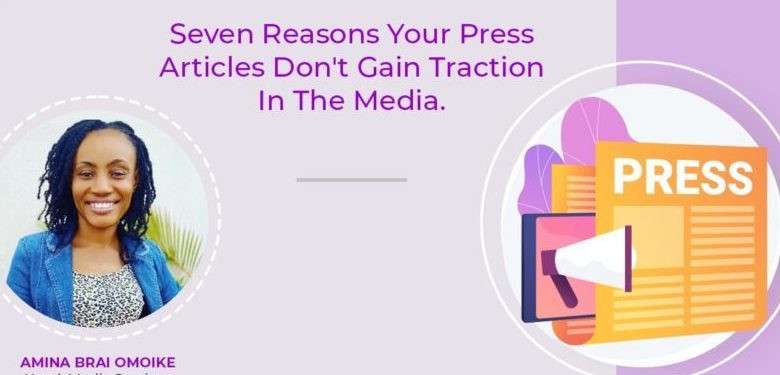
Press releases are vital to all stakeholders in the communications industry: the PR consultant, the client, and the media. Organisations share these written statements with the press to help them reach their target audience and convey their brand’s message, whether important information or announcements.
It can be frustrating for a PR consultant to send out a press release and not receive the expected traction in the media. Clients don’t pay for excuses, so none are tenable! In this article, you will learn a few tips from our experienced Head of Media Services on why your press releases are “dying” in journalists’ email boxes.
- The headline is not catchy enough – The headline should convey the press release’s message in a few words. For a headline to be considered adequate, it should provide much information in a catchy manner. If possible, use statistics. For example, if an organisation has closed its highest deals in history, don’t leave the headline hanging; add numbers. Instead of saying, “XXX hit a new transaction record in 2022,” a more catchy headline is “XXX hit 15 billion transactions in 2022.”
- It is not timely – Timeliness is critical when it comes to news. Ensure your press releases are not stale. For instance, a post-event press release should be distributed immediately after the event when the hype is still on. A pre-event press release should be sent latest three weeks before the event to enable journalists to fit it into their pages and help announce the event on time.
- It is too lengthy or short – With the steady reduction of newspaper paginations, a lengthy press release is hard to squeeze into the page. On the other hand, a brief press release is discouraging to read. When writing a press release, visualise an A4 paper. An ideal press release should be between 300 and 500 words – anything more or less is too long or too short.
- It is not relevant – Imagine sending out a press release about a client’s International Women’s Day activities in July. Enough said.
- It is not newsworthy – Most clients believe everything they do is news, but unfortunately, this is untrue. What is news to the organisation isn’t necessarily news to the media, so ensure your press releases are newsworthy.
- It is not detailed enough – Press releases should contain as much information as the media needs. Don’t leave gaps or provide incomplete information in the press release so journalists don’t have to call to get added information. This slows the news production flow, resulting in press releases not gaining enough traction.
- It is not saved in the proper format – It might surprise you that the format in which you send a press release will determine how easily it gets published. Never save a press release in PDF form. It makes it difficult for the journalist to prepare the document for publishing.
Press releases are still trusted PR tools for brand awareness and credibility, saving costs for advertising and building media relations. Therefore, press releases must gain quality traction to avoid wasted efforts.




